ASX: How far to fall?
By Colin Twiggs
May 7th, 2015 3:30 p.m. AET (1:30 a.m. EDT)
Advice herein is provided for the general information of readers and does not have regard to any particular person's investment objectives, financial situation or needs. Accordingly, no reader should act on the basis of any information contained herein without first having consulted a suitably qualified financial advisor.
Next Portfolio Update
A slight change to our normal routine. The next portfolio update for Research & Investment will be on 8th May 2015. If all goes well, future updates will be scheduled on the second Wednesday of each month.
Performance Update
The ASX200 Prime Momentum strategy returned +1.26%* for the 12 months ended 30th April 2015, compared to +10.23% for the ASX200 Accumulation Index. Underperformance is primarily attributable to the sharp fall in Sirtex (SRX) on March 17th. Concentrated portfolios are always more volatile because of high exposures to individual stocks, but they also tend to perform better in the long-term — which is why we recommend a minimum investment horizon of 5 years.
The S&P 500 Prime Momentum strategy returned +26.58%* for the 12 months ended 30th April 2015, compared to +12.98% for the S&P 500 Total Return Index.
Macroeconomic and volatility filters continue to indicate low to moderate risk and we maintain full exposure to equities. Splitting your investment between the ASX 200 and S&P 500 strategies would enhance diversification and help to reduce volatility.
* Results are unaudited and subject to revision.
Market Insight
Economic data remains reasonable, but stocks are experiencing medium-term selling pressure.
St Louis Federal Reserve Bank Financial Stress Index — a composite basket of indicators that reflect financial stress — below -1.0 standard deviations indicates stress in the financial system is near historic lows. Readings above +1.0 standard deviations would indicate the opposite, as illustrated in 2008.
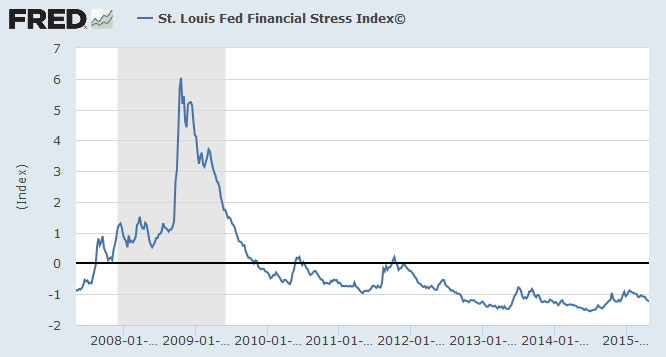
Most of the expansion in the monetary base from QE landed straight back at the Fed as excess reserve deposits by commercial banks. As long as the two measures rise and fall in sync, inflationary pressures will be muted, relieving pressure on the Fed to raise interest rates. But if excess reserves start to contract, pressure for higher rates will rise.
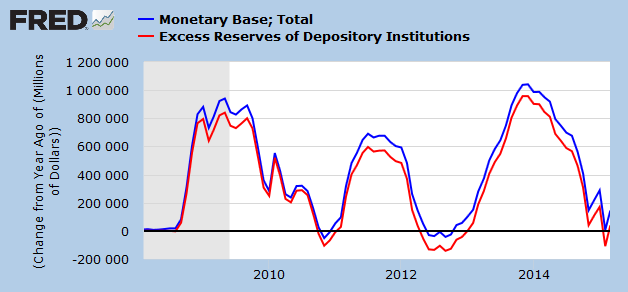
Present growth of the working monetary base (MB minus excess reserves), well above 5.0%, remains accommodating, with no sign of an economic slow-down.
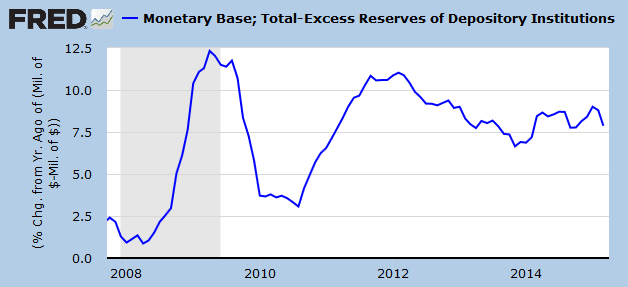
The same can be said of monetary aggregates in Australia.
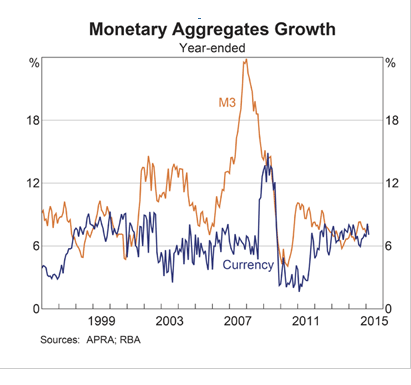
For those readers interested in the long-term macro scenario, Economic Policy Turned Inside Out by Stephen Roach is a must-read exposure of the danger of current global economic policies.
North American Stocks
The S&P 500 retreated below 2100 and the (secondary) rising trendline, warning of a test of support at 2040/2050. 21-Day Twiggs Money Flow is descending slowly, suggesting a ranging market (broad consolidation) rather than a sharp correction, but failure of support would warn of a test of the primary level at 2000.
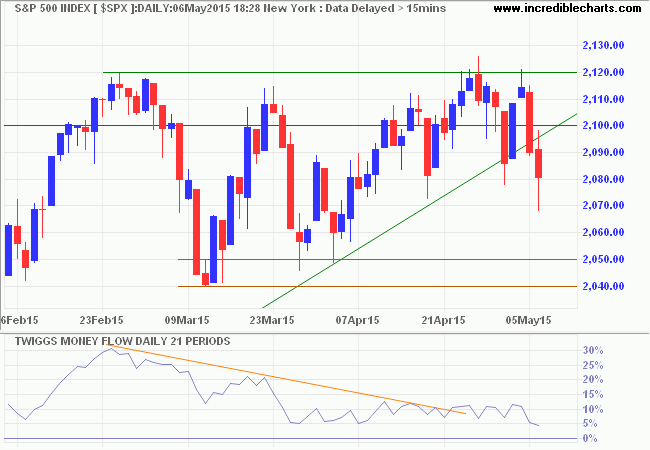
* Target calculation: 2120 + ( 2120 - 2040 ) = 2200
CBOE Volatility Index (VIX) rallied to 15, but still indicates low risk typical of a bull market.
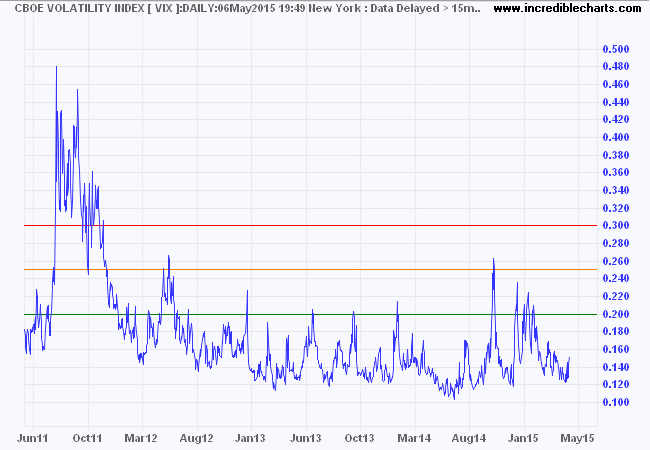
Dow Jones Industrial Average retreated below 18000 and is likely to test support at 17500. Again, gradual descent on Twiggs Money Flow suggests a ranging market rather than a sharp correction.
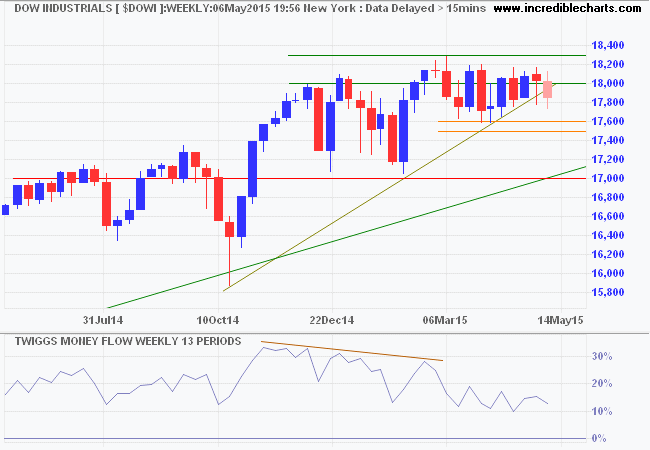
Canada's TSX 60, however, broke support at 890, signaling a correction to 855. 13-Week Twiggs Momentum holding above zero continues to indicate a primary up-trend.
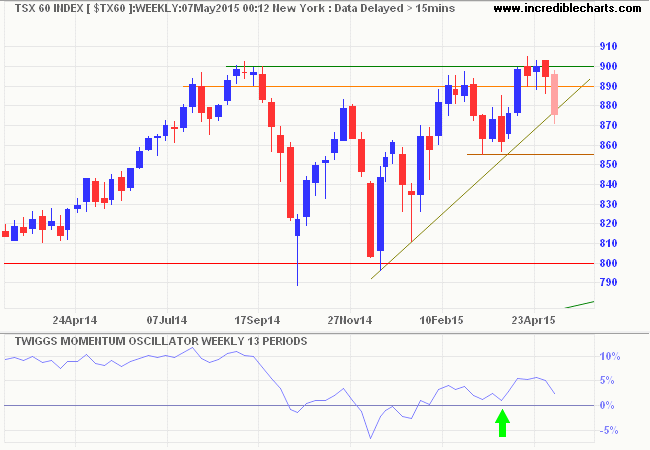
* Target calculation: 900 + ( 900 - 800 ) = 1000
Europe
Germany's DAX is undergoing a correction to test support at 11000 and the primary trendline. Respect of support would provide a solid base for further advances.
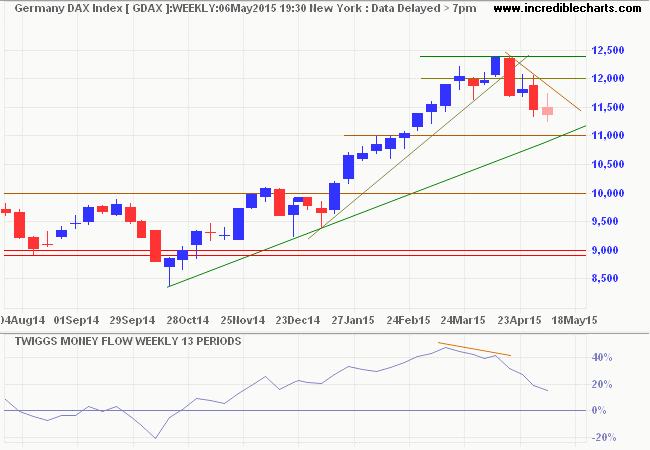
The Footsie retreated below 7000. Breach of 6900 would warn of a correction to 6700. Declining 13-week Twiggs Money Flow indicates medium-term selling pressure.
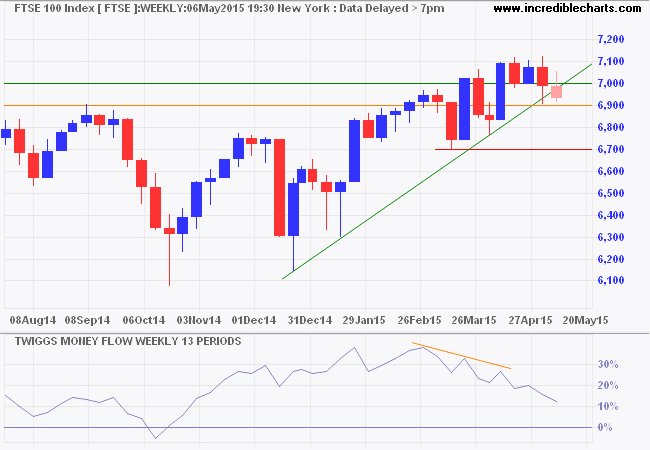
* Target calculation: 7000 + ( 7000 - 6000 ) = 8000
Asia
The Shanghai Composite broke its rising trendline and short-term support at 4400 to warn of a correction. Gradual descent of 21-day Twiggs Money Flow indicates mild selling pressure.
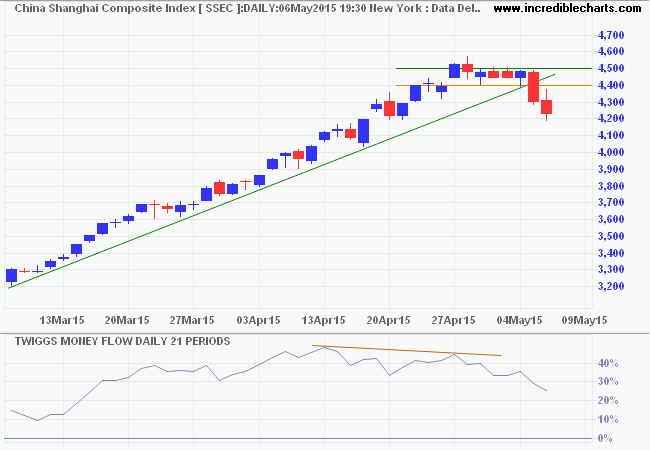
* Target calculation: 3500 + ( 3500 - 2500 ) = 4500
Japan's Nikkei 225 Index is consolidating below 20000. Breakout would suggest another advance, but a decline below 19500 would warn of a correction to 18000 and is more likely in the current climate. Declining 13-week Twiggs Money Flow reflects medium-term selling pressure.
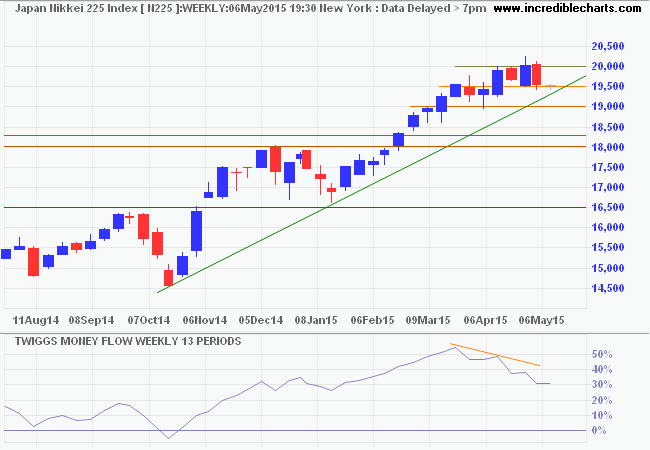
* Target calculation: 20000 + ( 20000 - 18000 ) = 22000
India's Sensex broke support at 27000. Follow-through below 26500 and the rising trendline would signal reversal to a primary down-trend, confirming the warning from 13-week Twiggs Money Flow (cross below zero). Respect of support at 26500, however, would provide a solid base for another advance.
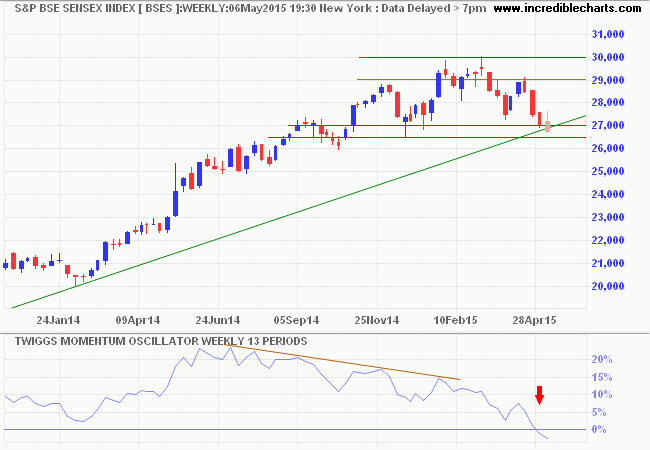
Australia
The ASX 200 is undergoing a correction after breaking support at 5750. Expect support between 5550 and 5650. Declining 13-week Twiggs Money Flow indicates medium-term selling pressure. Breach of 5550 would warn of a strong correction.
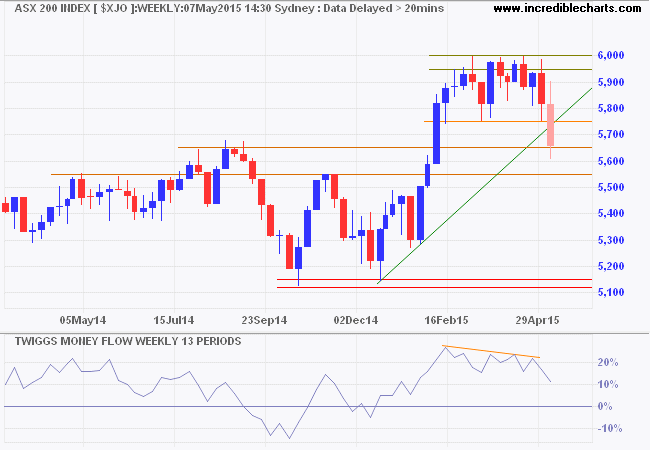
* Target calculation: 6000 + ( 6000 - 5750 ) = 6250
A simple rule dictates my buying: Be fearful when others are greedy, and be greedy when others are fearful.
~ Warren Buffett
Disclaimer
Research & Investment Pty Ltd is a Corporate Authorized Representative (AR Number 384 397) of Andika Pty Ltd which holds an Australian Financial Services Licence (AFSL 297069).
The information on this web site and in the newsletters is general in nature and does not consider your personal circumstances. Please contact your professional financial adviser for advice tailored to your needs.
Research & Investment Pty Ltd ("R&I") has made every effort to ensure the reliability of the views and recommendations expressed in the reports published on its websites and newsletters. Our research is based upon information known to us or which was obtained from sources which we believe to be reliable and accurate.
No guarantee as to the capital value of investments, nor future returns are made by R&I. Neither R&I nor its employees make any representation, warranty or guarantee that the information provided is complete, accurate, current or reliable.
You are under no obligation to use these services and should always compare financial services/products to find one which best meets your personal objectives, financial situation or needs.
To the extent permitted by law, R&I and its employees, agents and authorised representatives exclude all liability for any loss or damage (including indirect, special or consequential loss or damage) arising from the use of, or reliance on, any information. If the law prohibits the exclusion of such liability, such liability shall be limited, to the extent permitted by law, to the resupply of the said information or the cost of the said resupply.
Important Warning About Simulated Results
Research & Investment (R&I) specialise in developing, testing and researching investment strategies and systems. Within the R&I web site and newsletters, you will find information about investment strategies and their performance. It is important that you understand that results from R&I research are simulated and not actual results.
No representation is made that any investor will or is likely to achieve profits or losses similar to those shown.
Simulated performance results are generally prepared with the benefit of hindsight and do not involve financial risk. No modeling can completely account for the impact of financial risk in actual investment. Account size, brokerage and slippage may also diverge from simulated results. Numerous other factors related to the markets in general or to the implementation of any specific investment system cannot be fully accounted for in the preparation of simulated performance results and may adversely affect actual investment results.
To the extent permitted by law, R&I and its employees, agents and authorised representatives exclude all liability for any loss or damage (including indirect, special or consequential loss or damage) arising from the use of, or reliance on, any information offered by R&I whether or not caused by any negligent act or omission.

Author: Colin Twiggs is a former investment banker with almost 40 years of experience in financial markets. He co-founded Incredible Charts and writes the popular Trading Diary and Patient Investor newsletters.
Using a top-down approach, Colin identifies key macro trends in the global economy before evaluating selected opportunities using a combination of fundamental and technical analysis.
Focusing on interest rates and financial market liquidity as primary drivers of the economic cycle, he warned of the 2008/2009 and 2020 bear markets well ahead of actual events.
He founded PVT Capital (AFSL No. 546090) in May 2023, which offers investment strategy and advice to wholesale clients.
